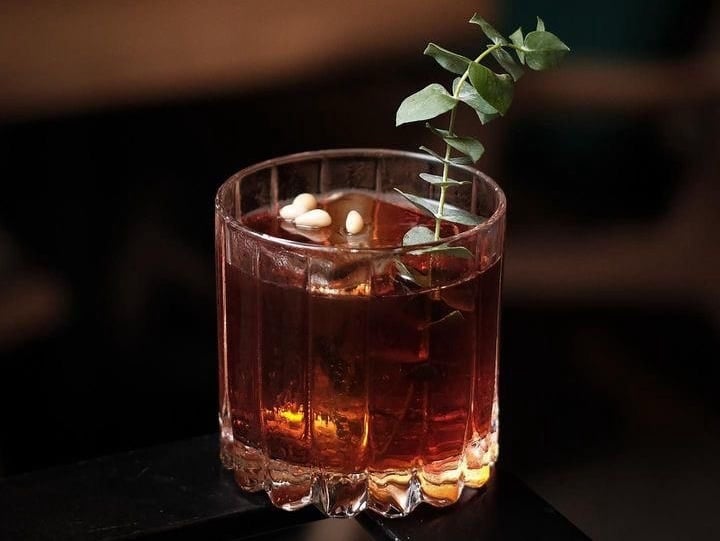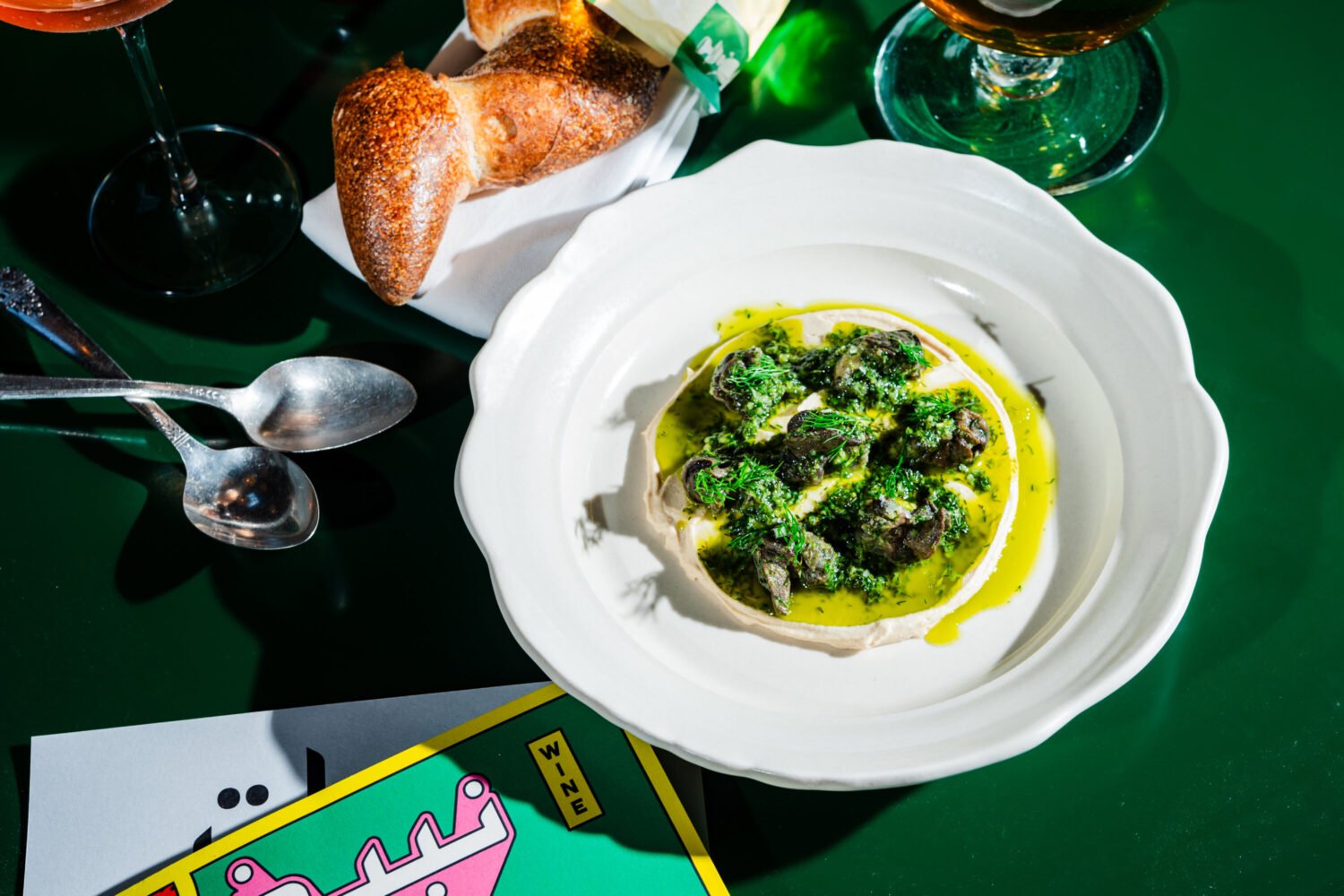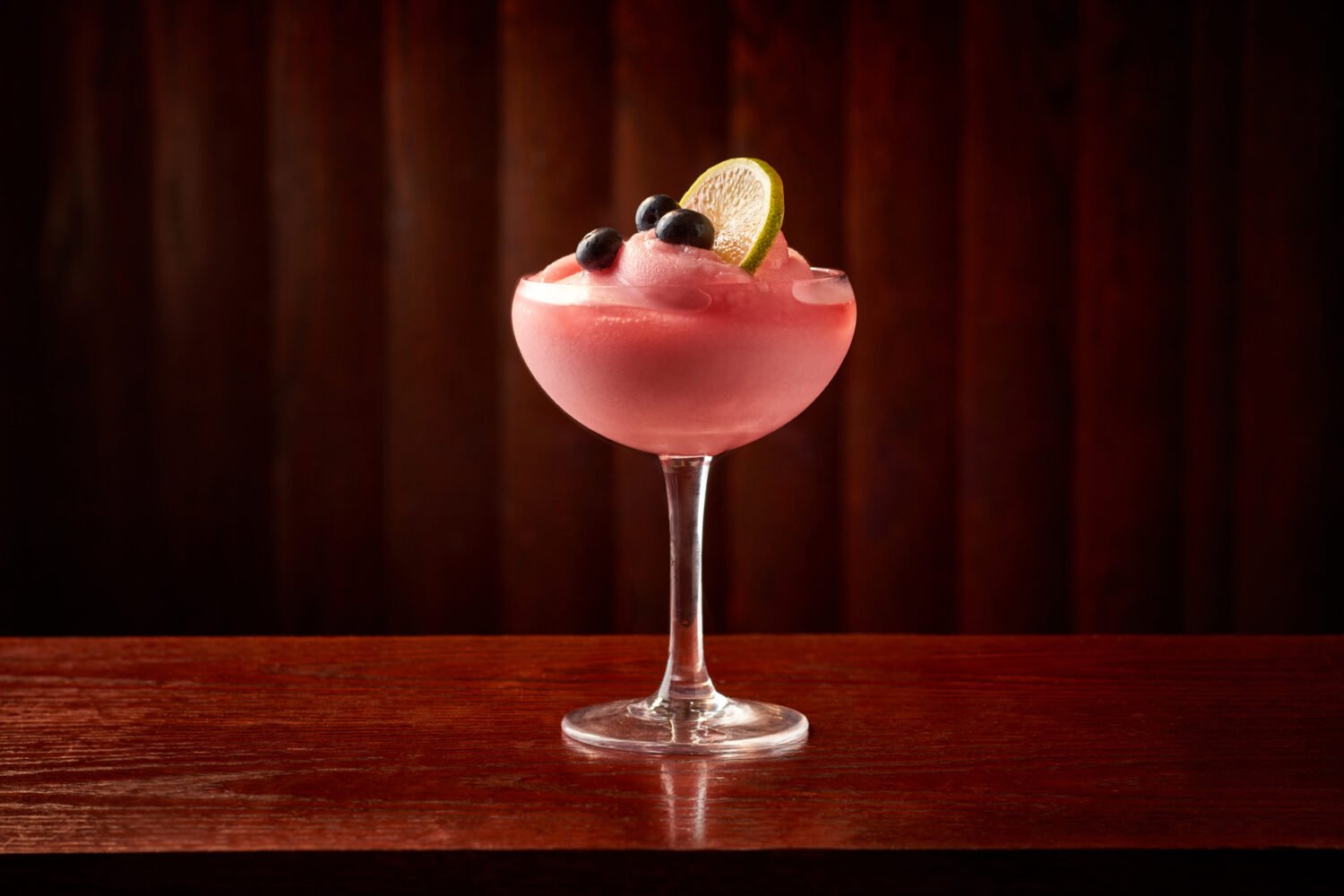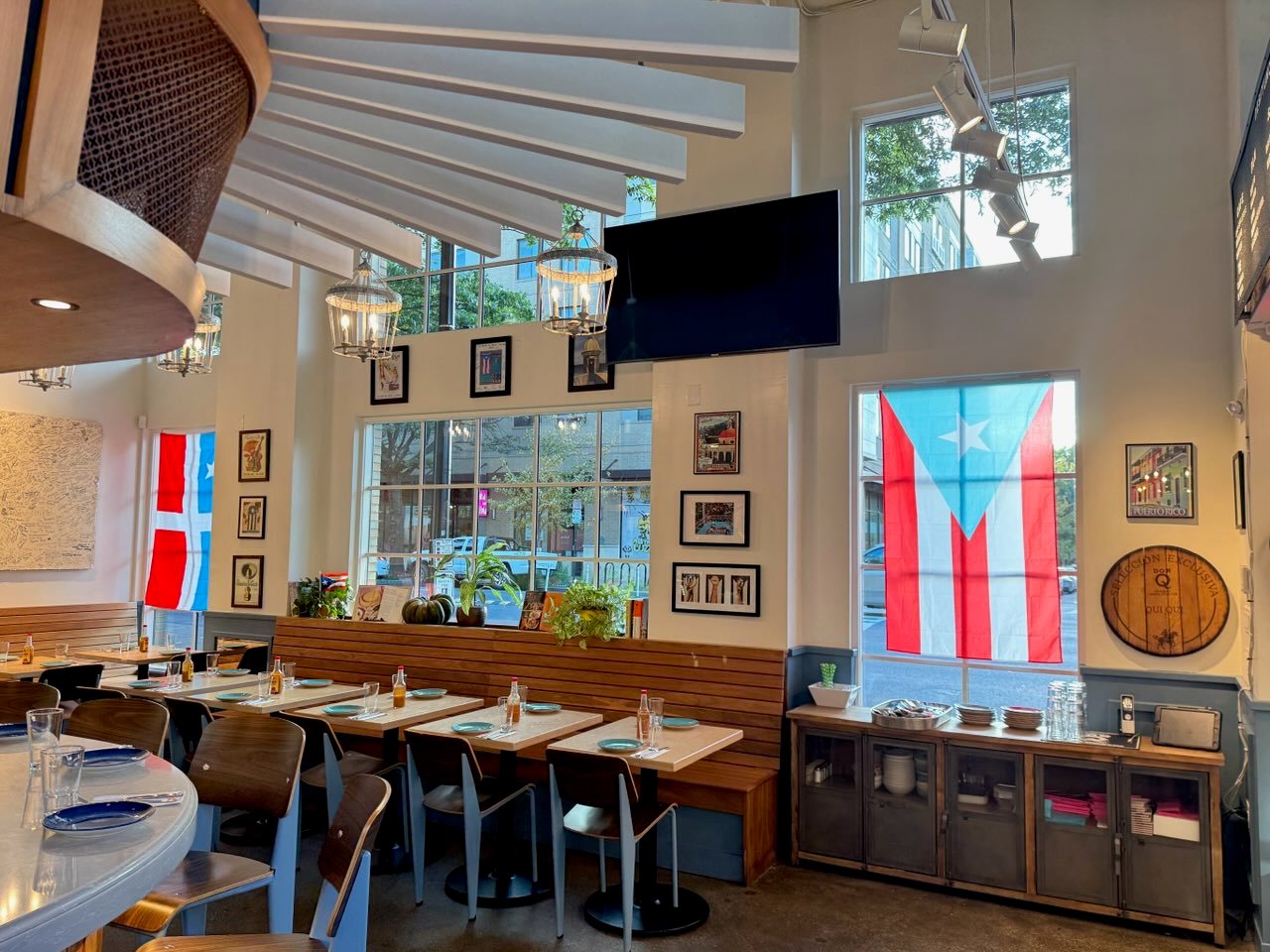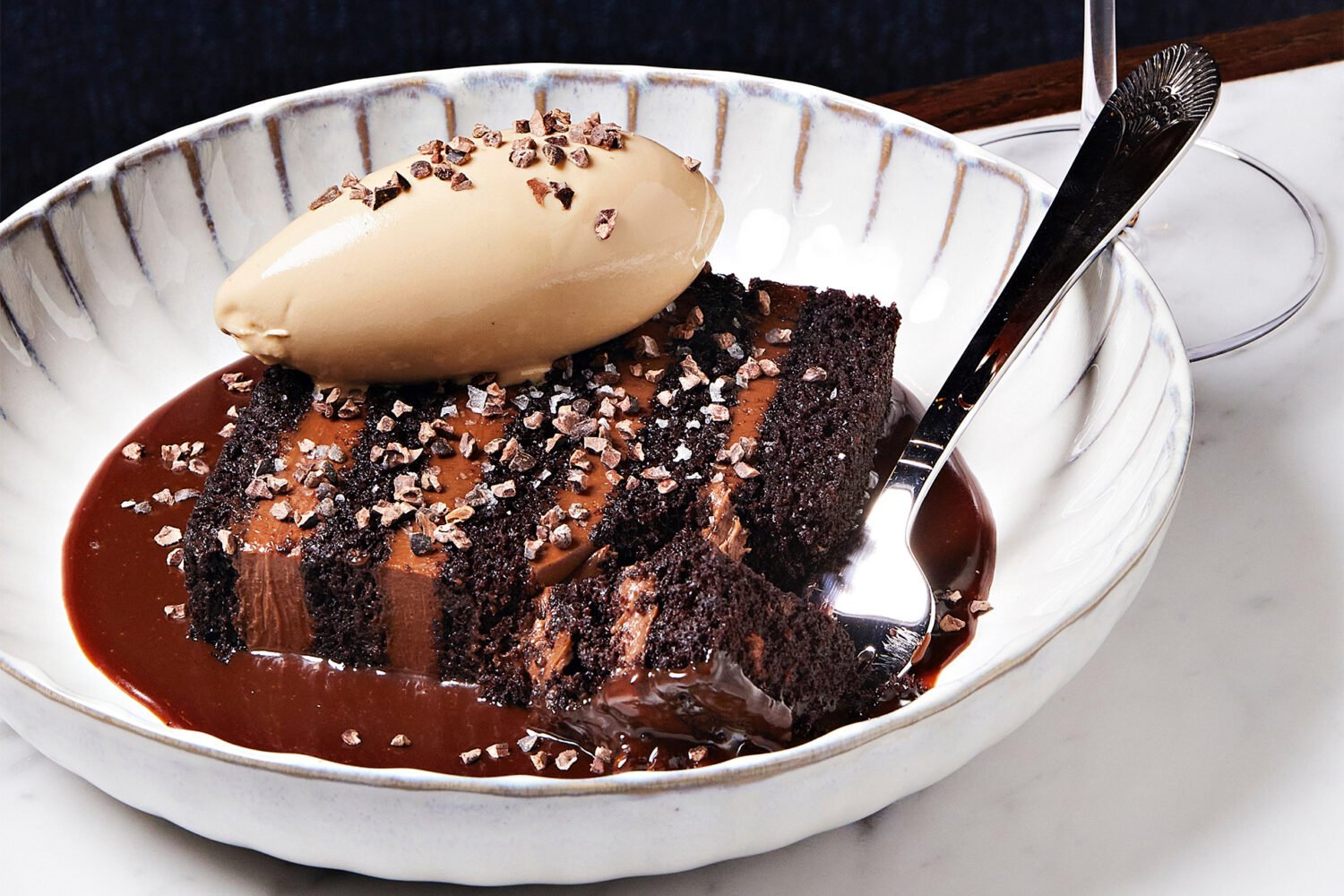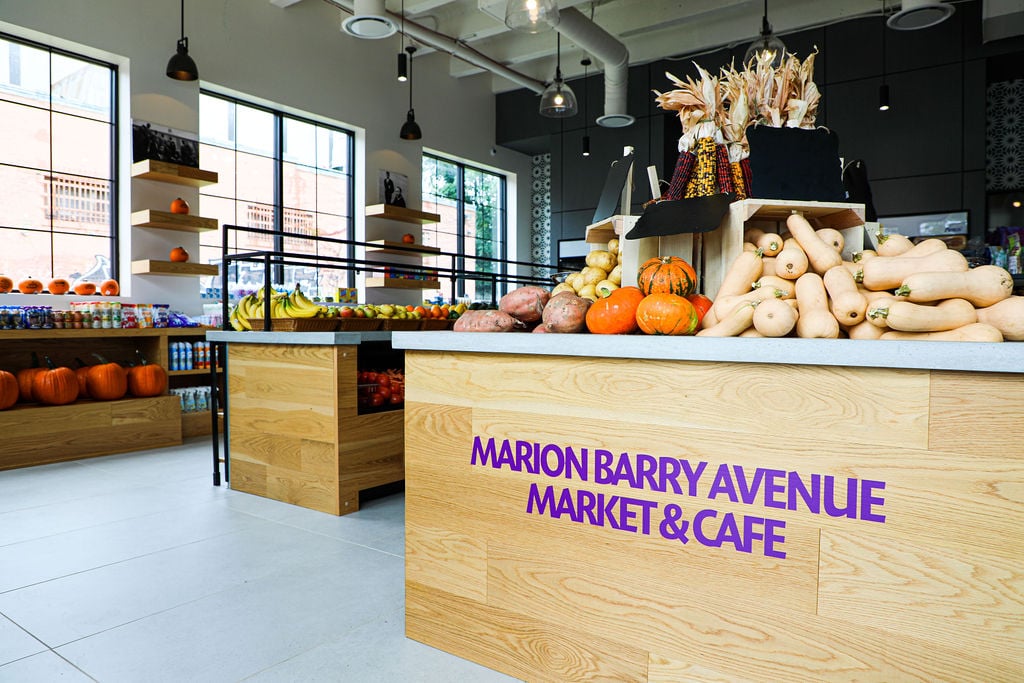Florería Atlántico and Brasero Atlántico. 1066 Wisconsin Ave., NW.
Florería Atlántico is at first glance a flower shop, where you can pick up a bouquet alongside bottles of wine, Argentinian pastries, and coffee. Unlike other flower shops, however, this one will stay open until 2 AM. That’s because the back “fridge” door leads to a hidden downstair cocktail bar—whose original location in Buenos Aires is ranked among the World’s 50 Best Bars.
There’s more: Next door is Brasero Atlántico—DC’s only strictly Argentinian restaurant—which will center around a giant live-fire grill. The restaurant is focused on cooking from the Argentinian countryside shaped by waves of immigrants from across the Atlantic since the late 19th century.
Both are slated to open in Georgetown in the coming weeks, following an expansion from Buenos Aires to Barcelona and Bahrain (with Los Angeles to come). Co-owner Renato “Tato” Giovannoni says they have an investor from DC who attracted them to the city. Plus, his business partner Alex Resnik had spent a lot of time here as a longtime senior operations partner within Wolfgang Puck Dining Group. Here’s what to expect:
Florería Atlántico
The original Florería Atlántico in Buenos Aires opened in 2013 on what Giovannoni describes as one of the most beautiful and traditional streets of the city. He says he wanted to have a flower shop up front to “give something nice to the neighbors.” But he’s adamant about not calling it a speakeasy: “Speakeasies have been bastardized. Every hidden bar now is called a speakeasy, but it’s not.”
The Georgetown flower shop is not just for show—you can actually buy flowers. But in the late afternoon, the florist will be replaced by a host (who can also arrange bouquets). As you head into the bar, it looks like you are descending underwater with lighting that simulates the sun shining beneath the sea. Green velvet lounge furniture pairs with nacre shell tabletops alongside a copper and wood bar. The sounds of waves and seagulls play in the restrooms. A small seafood-centric bar menu will include crudos, oysters, and king crab-and-shrimp empanadas. Still, Giovannoni notes that the theme is not the ocean, but rather “the movement of humanity and the human geography… Our menus are inspired basically by native towns, colonies, immigrations.”
Giovannoni starts by consulting with an Argentinian historian when conceptualizing his cocktails. “We tell him the idea, and then he does the research about the native towns or colonies… Flavors are the last thing to come,” he says. For DC, some drinks will also nod to Georgetown’s history as a major port.
One cocktail is inspired by a coastal town at the southern tip of Argentina, where the native people canoed between icebergs and were among the first to trade with French and British sailors. The cocktail is blue, like the Atlantic Ocean, thanks to blue spirulina infused into Old Tom gin, Scotch, and earl gray tea (among the ingredients brought by the Brits). It also incorporates a shrub of rose hips and berries (part of the local diet) along with bitters made from king crab cooked down with rum, shrimp, mushrooms, and orange peels.
“You taste a little bit of saltiness,” Giovannoni says. “We put a few drops of that in the cocktail.”
One of Giovannoni’s signature cocktails and best-sellers is the Negroni Balestrini, named after his grandfather Enrique “Lelo” Balestrini who he describes as a “mix in between Indiana Jones and 007.” Giovannoni has a distillery in Argentina where he makes gin, vermouth, and fernet—which he plans to bring to DC. And so the negroni combines Giovannoni’s own gin, amaro, and Campari with sea water. (For the Buenos Aires bar, his mother brings the sea water from his hometown every month. But for DC, he buys a bottled variety.) “I drink sea water every morning,” Giovannoni says. “I need to be close to the ocean. I love the ocean. So I drink it.”
Batches of the cocktail are smoked with eucalyptus—a smell that takes Giovannoni back to eucalyptus fruits burning from his grandfather’s chimney.
The DC location will also have a vinyl DJ booth playing tango, milonga, jazz, and other South American music. Giovannoni says Florería Atlántico was the first bar in Argentina to do vinyl 14 years ago: “I don’t allow anybody playing with a computer… I don’t let anybody do house music—very boom, boom, boom.”
Brasero Atlántico
While Florería focuses on the sea, next-door Brasero is dedicated to the Argentinian countryside, inspired by Polish, Jewish, British, French, Italian, and Spanish immigrants who arrived from the 1880s through 1920s.
As soon as you walk in, you’re faced with an enormous wood-fired grill at the front of the leather- and wood-decked dining room. Although it’s not intended to be a steakhouse, there will be several steaks “because we’re from Argentina,” Giovannoni says, alongside wild game and grilled seafood, such as freshwater fish or octopus atop a Spanish potato tortilla. Other highlights will include housemade pâtés, chorizo and morcilla sausages, sweetbreads, pastas, osso buco empanadas, and a beef Milanese sauteed with tomato sauce, capers, and peperoncini. The restaurant may dedicate a few bar seats to an “omakase criollo,” with nine or so dishes paired with wines and cocktails.
The vermouth- and sherry-heavy bar menu at Brasero is “focused on the way we drink aperitivos in Argentina,” Giovannoni says. “We’ve got a very bitter palate influenced by the Italian, German, French, Spanish.” One signature drink will be a play on fernet branca with cola, the national drink of Argentina—done here with with fresh cherries macerated into the fernet, maraschino liqueur, and pink grapefruit soda.
Giovannoni, who has background studying art direction and graphic design, is personally hand-painting sea creatures from vintage maps on the walls. The building, a historic firehouse once home to Italian restaurant Papa-Razzi, will also include a tall-ceilinged private dining room surrounded in reclaimed local barn wood with a giant tree hanging from the ceiling. The tree, inspired by what you’d find in the Pampas countryside of Argentina, was built by the same people who make fake trees for the zoo.
“I’m very interested in the history of everything,” Giovannoni says. “For me, every concept needs to have a real story behind it. And that’s the way I work.”

